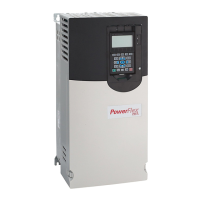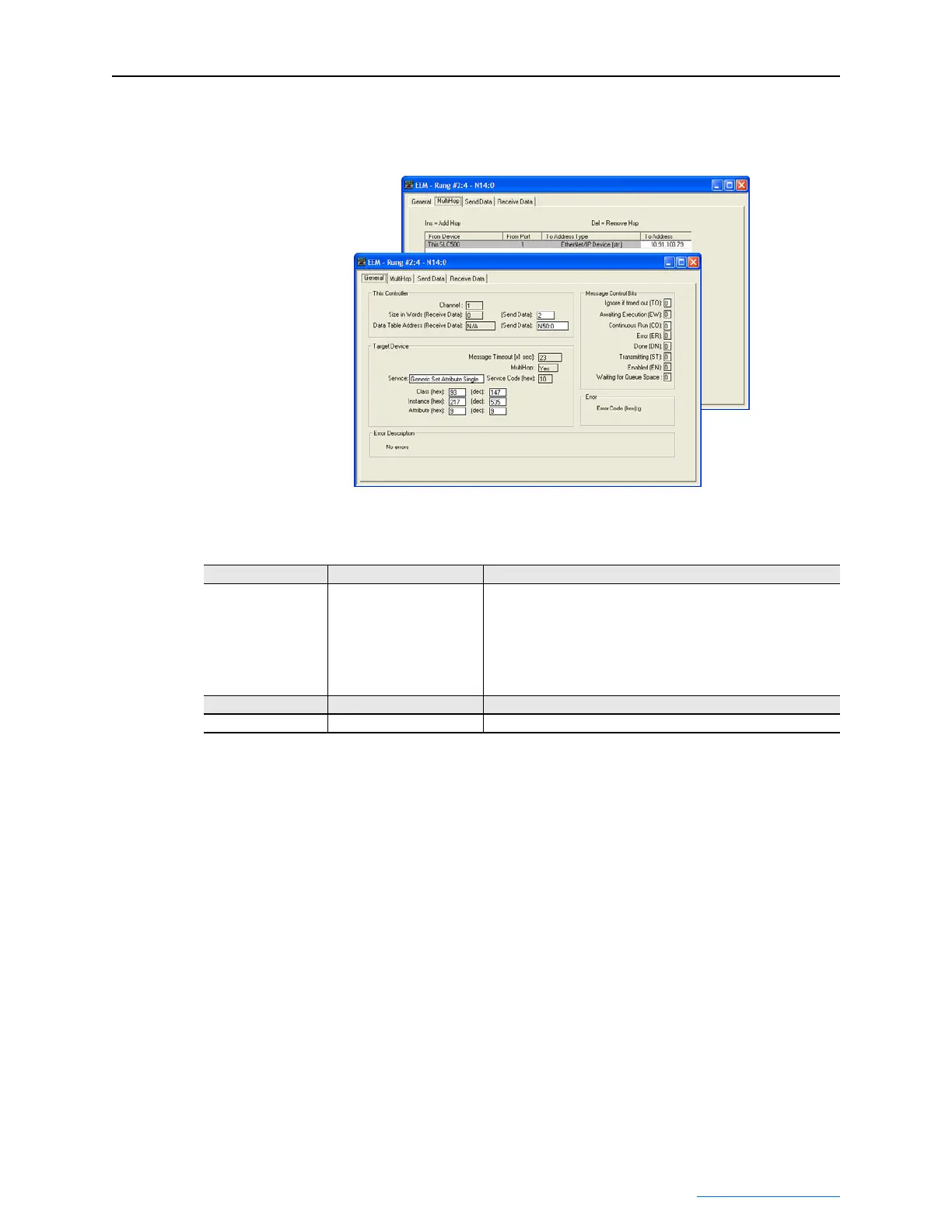Using Explicit Messaging 6-21
PowerFlex® 755 Drive Embedded EtherNet/IP Adapter User Manual
Publication 750COM-UM001A-EN-P
SLC 500 – Formatting a Message to Write Single Parameter
Figure 6.25 Generic Set Attribute Single Message Configuration Screens
The following table identifies the data that is required in each box to
format a single write message.
General Tab Example Value Description
Size in Words
Data Table Address
Service
(1)
Class
Instance
Attribute
(2)
2
(3)
N50:0
Generic Set Attribute Single
93 (Hex.)
535 (Dec.)
9 or 10 (Dec.)
Number of words to be transferred. Each word size is a 16-bit integer.
An unused controller data table address containing the message
instruction. This address is the starting word of the request file.
Code for the requested service.
Class ID for the DPI Parameter Object.
Instance number is the same as the parameter number.
Attribute number for the Parameter Value attribute.
MultiHop Tab Example Value Description
To Address 10.91.100.79 IP address of the adapter connected to the drive.
(1)
The default setting for Service is “Custom,” enabling entry of a Service Code not available from the Service pull-down menu. When
selecting a Service other than “Custom” from the pull-down menu, an appropriate Hex. value is automatically assigned to the Service Code
box which grays out (unavailable).
(2)
Setting the Attribute value to “9” will write the parameter value to the drive’s Non-Volatile Storage (EEPROM) memory, so the parameter
value will remain even after the drive is power cycled. Important: When set to “9,” be very cautious as the EEPROM may quickly exceed its
life cycle and cause the drive to malfunction. Setting the Attribute value to “10” will write the parameter value to temporary memory, so the
parameter value will be lost after the drive is power cycled. It is recommended to use the “10” setting when frequent write messages are
required.
(3)
In this example, Accel Time 1 is a 32-bit REAL (floating point) parameter. If the parameter being written to is a 16-bit parameter, the Size in
Words would be set to 1.

